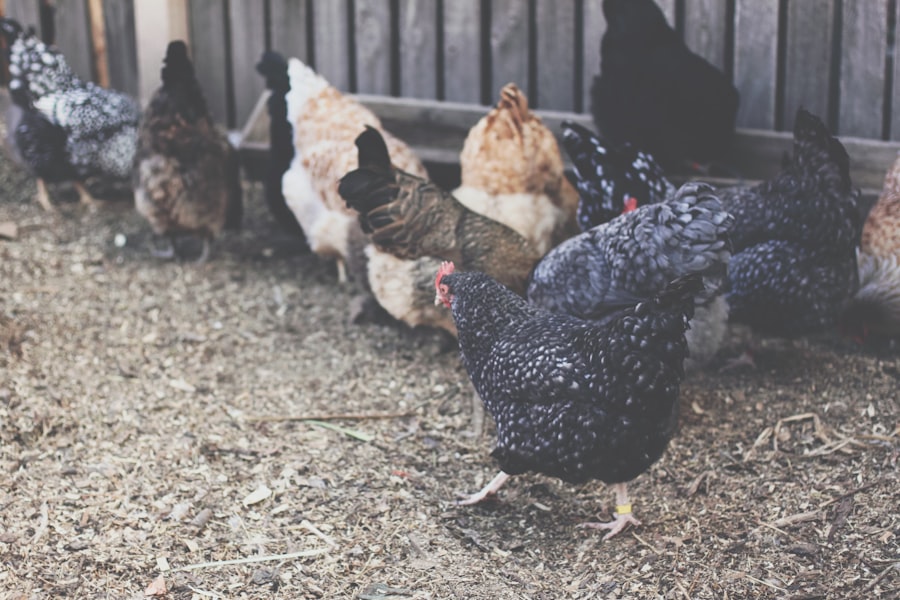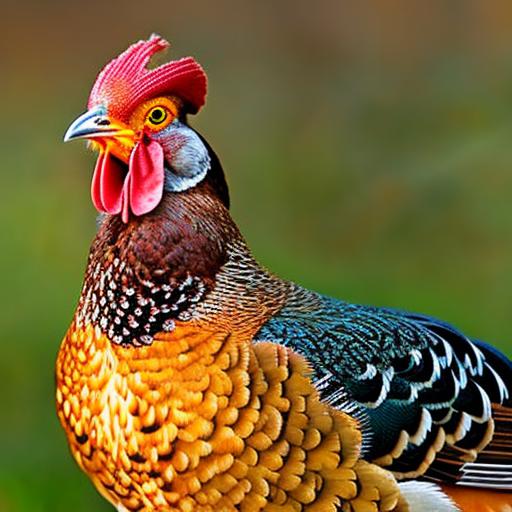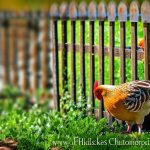Keeping chickens and pheasants together can be an interesting and rewarding experience for poultry enthusiasts. However, it is important to consider the pros and cons before embarking on this endeavor. On one hand, keeping chickens and pheasants together can provide companionship for both species and create a diverse and vibrant flock. On the other hand, there are certain challenges that come with mixing these two species, such as potential health concerns and aggression issues. In this article, we will explore the various aspects of keeping chickens and pheasants together, including their natural behaviors, factors to consider, creating the ideal living environment, feeding and nutrition, health concerns, addressing aggression, breeding and raising chicks together, legal considerations, and ultimately help readers decide if keeping chickens and pheasants together is right for them.
Key Takeaways
- Keeping chickens and pheasants together has both pros and cons.
- Understanding the natural behaviors of chickens and pheasants is crucial for successful cohabitation.
- Factors such as space, shelter, and temperament should be considered when keeping chickens and pheasants together.
- Providing a suitable living environment and proper nutrition is essential for the health of both species.
- Health concerns, aggression, and legal considerations should also be taken into account before keeping chickens and pheasants together.
Understanding the Natural Behaviors of Chickens and Pheasants
To successfully keep chickens and pheasants together, it is important to understand their natural behaviors. Chickens are social animals that thrive in flocks. They have a well-established pecking order where each bird knows its place in the hierarchy. Chickens also have a strong instinct to scratch the ground in search of food and dust bathe to keep themselves clean.
Pheasants, on the other hand, are more solitary birds that prefer to live in small groups or pairs. They have a strong instinct for flight and require more space compared to chickens. Pheasants also have a natural inclination to forage for food on the ground.
Factors to Consider When Keeping Chickens and Pheasants Together
Before deciding to keep chickens and pheasants together, there are several factors that should be considered. First and foremost is space. Both chickens and pheasants require ample space to roam and forage. It is recommended to provide at least 10 square feet of space per bird to ensure they have enough room to move around comfortably.
Shelter is another important factor to consider. Chickens and pheasants need a secure coop or housing structure to protect them from predators and the elements. The coop should have separate areas for roosting and nesting, as well as adequate ventilation.
Food is also a crucial consideration. Chickens and pheasants have different dietary needs, so it is important to provide appropriate feed for each species. Chickens require a balanced diet that includes grains, protein, vitamins, and minerals. Pheasants, on the other hand, require a higher protein diet that includes game bird feed or a mix of grains and insects.
Creating the Ideal Living Environment for Chickens and Pheasants
To create an ideal living environment for chickens and pheasants, it is important to provide adequate space and shelter. As mentioned earlier, both species require ample space to roam and forage. This can be achieved by providing a large outdoor area or free-ranging them in a secure enclosure.
The shelter should be spacious enough to accommodate both chickens and pheasants comfortably. It should have separate roosting and nesting areas to cater to the different needs of each species. Additionally, the coop should be predator-proof with sturdy fencing and secure locks.
Feeding and Nutrition for Chickens and Pheasants
Feeding and nutrition are essential aspects of keeping chickens and pheasants together. Chickens require a balanced diet that includes grains, protein, vitamins, and minerals. Commercial chicken feed is readily available and provides all the necessary nutrients for chickens.
Pheasants, on the other hand, require a higher protein diet. Game bird feed or a mix of grains and insects can be provided to meet their nutritional needs. It is important to ensure that both species have access to their respective feeds and that they are not competing for food.
Health Concerns When Keeping Chickens and Pheasants Together

When keeping chickens and pheasants together, there are potential health concerns that need to be monitored. Chickens and pheasants can carry different diseases and parasites, so it is important to regularly check for signs of illness and treat any issues promptly.
It is also important to ensure that the living environment is clean and free from feces and other waste. Regular cleaning of the coop and providing fresh bedding can help prevent the spread of diseases.
Addressing Aggression and Pecking Order Issues
Aggression and pecking order issues can arise when keeping chickens and pheasants together. Chickens have a well-established pecking order, and introducing new birds can disrupt this hierarchy. It is important to introduce new birds gradually and monitor their interactions closely.
Providing enough space and resources can help minimize aggression. Having multiple feeding stations and nesting areas can reduce competition among the birds. If aggression becomes a serious issue, separating the aggressive bird or providing visual barriers can help alleviate the problem.
Breeding and Raising Chicks and Pheasant Chicks Together
Breeding and raising chicks and pheasant chicks together can be a rewarding experience. However, it is important to ensure that both species are compatible for successful breeding. Chickens and pheasants have different breeding behaviors, so it is important to research the specific requirements of each species.
When raising chicks together, it is important to provide a safe and secure environment for them to grow. Separate brooders or enclosures may be necessary to prevent any harm or aggression towards the chicks.
Legal Considerations for Keeping Chickens and Pheasants Together
Before keeping chickens and pheasants together, it is important to check local laws and regulations. Some areas may have restrictions on keeping certain species or require permits for keeping poultry. It is important to comply with these regulations to avoid any legal issues.
Is Keeping Chickens and Pheasants Together Right for You?
In conclusion, keeping chickens and pheasants together can be a rewarding experience for poultry enthusiasts. However, it is important to consider the pros and cons before embarking on this endeavor. Understanding the natural behaviors of chickens and pheasants, considering factors such as space, shelter, and food, creating an ideal living environment, providing proper feeding and nutrition, addressing health concerns, aggression, and pecking order issues, breeding and raising chicks together, and checking legal considerations are all important aspects to consider when deciding if keeping chickens and pheasants together is right for you. By carefully considering these factors and providing the necessary care and attention, it is possible to successfully keep chickens and pheasants together and enjoy the benefits of a diverse and vibrant flock.
If you’re considering keeping chickens and pheasants together, it’s important to understand the compatibility and potential challenges that may arise. In a related article on Poultry Wizard, you can learn more about the topic and gain valuable insights. Discover the do’s and don’ts of cohabitating these two bird species, as well as tips for creating a harmonious environment. To delve deeper into this subject, check out the article “Can You Keep Chickens and Pheasants Together?” on Poultry Wizard’s website.
FAQs
What are chickens and pheasants?
Chickens and pheasants are both types of birds commonly kept as domesticated animals. Chickens are typically raised for their meat and eggs, while pheasants are often kept for their meat or as game birds for hunting.
Can chickens and pheasants be kept together?
It is generally not recommended to keep chickens and pheasants together. Chickens can carry diseases that are harmful to pheasants, and pheasants may be aggressive towards chickens. Additionally, pheasants have different dietary needs than chickens and may not thrive on the same feed.
What are the risks of keeping chickens and pheasants together?
The risks of keeping chickens and pheasants together include the spread of disease, injury or death to the birds, and decreased productivity or growth due to competition for resources. Additionally, pheasants may become stressed or aggressive in the presence of chickens, which can lead to further health problems.
What should I consider before keeping chickens and pheasants together?
Before keeping chickens and pheasants together, it is important to consider the space and resources available, as well as the potential risks and benefits. It may be necessary to provide separate housing and feeding areas for the birds, and to monitor their behavior closely to ensure their health and safety.
What are some alternatives to keeping chickens and pheasants together?
If you are interested in raising both chickens and pheasants, it may be best to keep them in separate areas or to focus on one species at a time. Alternatively, you could consider raising other types of birds that are more compatible with chickens, such as ducks or turkeys.
Meet Walter, the feathered-friend fanatic of Florida! Nestled in the sunshine state, Walter struts through life with his feathered companions, clucking his way to happiness. With a coop that’s fancier than a five-star hotel, he’s the Don Juan of the chicken world. When he’s not teaching his hens to do the cha-cha, you’ll find him in a heated debate with his prized rooster, Sir Clucks-a-Lot. Walter’s poultry passion is no yolk; he’s the sunny-side-up guy you never knew you needed in your flock of friends!







